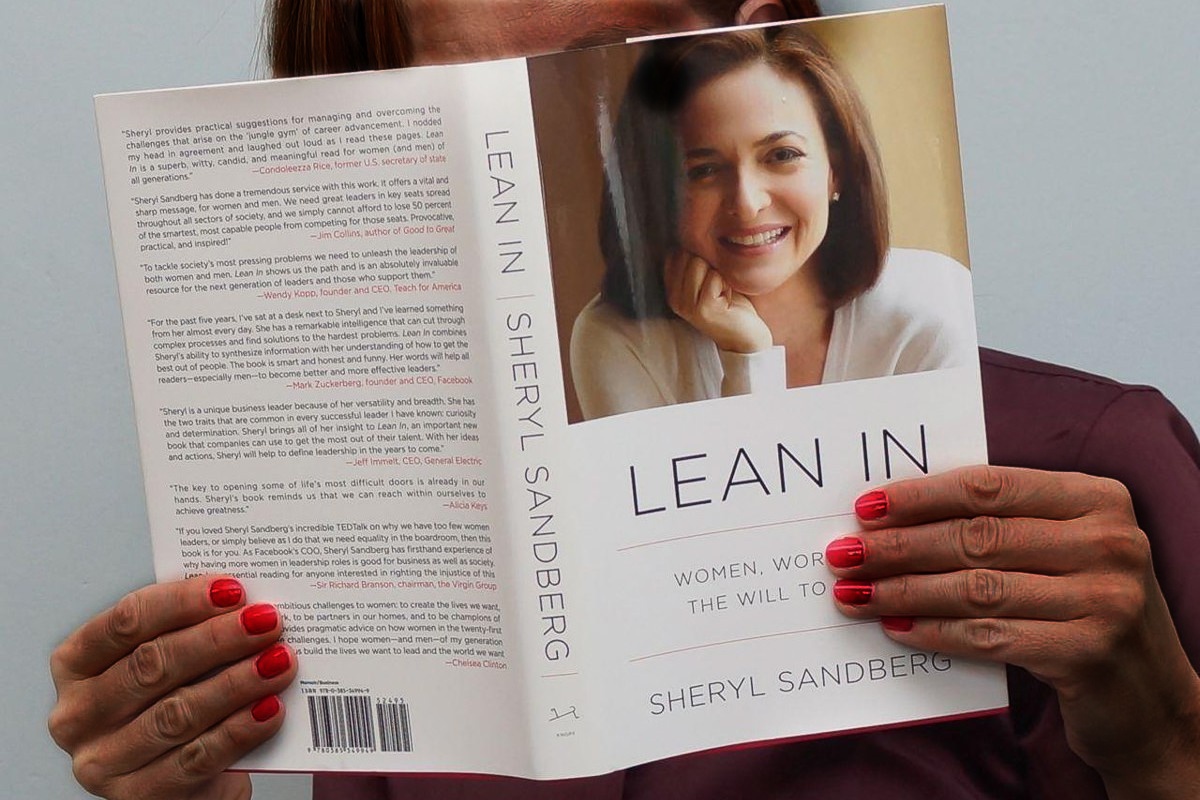Leaning in is an interesting concept. It revolves around the empowerment of women, a message that is hard to refute—at least, in theory. Sheryl Sandberg’s message, outlined in the book, “Lean In” is to empower women and raise them to new heights in any and all of their ambitions.
The problem with much of Sandberg’s message, ironically, is that it’s not ambitious enough. The book uses a form of ambition previously defined by men and rooted in selfishness. She acknowledges the differences in men and women and yet never changes her definitions for success that were by and large defined by men. Her definition of equality exists in a man’s world, which relies on inequality.
On career paths and confidence
In the beginning of the book, she brings up an anecdote about the two career paths for (White*) women in the 1950s: teaching and nursing. Never does she acknowledge the value in these professions, choosing rather to shift focus to and praise more recent competition between men and women in academia as well as entry-level careers. For all of the talk about overlooking women’s accomplishments, she seemed to do quite a bit of it herself regarding the very necessary fields of teaching and nursing. Professionally, her values are almost entirely shaped by men, disregarding the achievements of women outside the home prior to her generation. These too hold value.
Much of her rhetoric involves inflating women’s egos and confidence, which I support to a degree. Perhaps the answer lies not just in inflating women’s egos, but deflating men’s. After all, no one wants to be in a room with a bunch of airheads. If women who act like men are a problem, then perhaps the way that men act is also a problem and we just tolerate it too much from them. We almost see her reach this conclusion as she talks about increased acceptance of emotion (aka perceived femininity) in the workplace, but she doesn’t quite arrive at the conclusion that masculine behavior is also a potential issue.
Rampant double standards
For much of the book, we see her address double-binds and double-standards, and then attack the problem solely from the viewpoint of women. This is where the ambition is lacking for me. Although she reframes and imagines personal partnerships with men in a new light with new distributed systems, she fails to do the same for the workplace environment and relationships. The onus is on women to change and be empowered, rather than both empower women and change the system to value traditionally “male” and “female” contributions alike.
For example, when referencing the Heidi/Howard experiment, there is an undeniable issue in perception of success along gender lines. Male and female traits are clearly defined in opposition to one another, and professional achievement is considered a male thing. Her response is that these traits can be possessed by both men and women. However, by not changing the male-dominated view of success, she discredits the “caregivers, sensitive, and communal” traits commonly associated with women. These traits also have value, even in a business context. She nears this conclusion at multiple points, but never quite gets there (which seems to be a common theme in my critique.)
The problem with diversity
Another point touched upon lightly throughout sections of the book that lacks appropriate attention is the value of advocacy and support. It absolutely sucks to hold the weight of representation on your own, and so special care should be made by women to support other women and marginalized groups. She essentially is relying on trickle-down feminism, when it’s intersectional feminism that needs to occur at all levels. Diversity means nothing without inclusion, and women can and do exclude others. Which brings me to my next point…
This all comes before one of the biggest blind spots of the story: women of color. She brings up two anecdotes of men of color being able to relate to her because of their marginalization, but never addresses the intersection of womanhood and minorities**. I don’t know if this should be expected of every White woman, but one who chooses to speak on behalf of all women should probably at the very least address there are other difficulties added with these traits.
Closing thoughts
In essence, much of my issue with “Lean In” lies in its lack of vision and comprehensive rhetoric. I don’t expect this knowledge of everyone, just people who choose to write a book on gender equity and inequality. This issue is heavily nuanced and it’s nearly impossible to reconcile without addressing ingrained biases and thoroughly evaluating the starting point. That being said, I do appreciate her willingness to shine any light on this issue.
Sandberg states in the beginning of the novel that she is not well-versed in the humanities and is aiming for an equal world, without really defining what that means. Equal opportunity and equal outcome are wildly different, and even after finishing the book I’m unsure of what the end goal was. I suppose this is a list of grievances she personally encountered that also applied to many other women, in which case I guess I should accept these glaring deficiencies in rhetoric. This is one of those things where a background in humanities may have helped. Leaning into yourself is great, but without backing by theory and history it’s likely to fall flat as a movement.




I think Selam nails it on the head with her analysis that there is something fleetingly inspiring about the idea of “Leaning In”, but it’s surely short of a movement. The book ignorantly overlooks core voices and perspectives that must be in fact amplified to reach her “equal world vision”. I also agree that Sandberg overvalues successes in traditionally male/masculin spheres versus female/feminine ones, to a fault. That said, I also remember that in her world, this was the value of success she chose to subscribe to and she should never be discouraged from having her values aligned with more “masculine” ones.